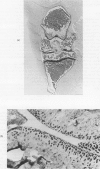Abstract
A high incidence of natural osteoarthritis of the knee joint is found in male mice of the STR/ORT strain. The condition affects mainly the medial tibial cartilage and by the age of 27 weeks most male mice of this strain show some osteoarthritic change. Analysis of the oxidative metabolism of the chondrocytes during the development of the lesion has been facilitated by the techniques of quantitative cytochemistry. The activity of glucose-6-phosphate dehydrogenase (G6PD) has been investigated as indicative of the NADPH-generating pentose-phosphate pathway; the activities of glyceraldehyde-3-phosphate (G3PD) and lactate dehydrogenase (LDH) have been studied as indicators of glycolytic activity. In young STR/ORT mice the G6PD activity of the lateral tibial cartilage was greater and more variable than in the control mice of the CBA/HT6 strain. The activity in the medial cartilage, relative to that in the lateral cartilage, decreased with age; this change was not reflected in the activities of the other enzymes. In the lateral cartilage, the expected relationship was found between the G6PD and the G3PD activities and between the LDH and the G3PD activities. In the medial cartilage, the G6PD activities were not related to the G3PD activities. The decreased proportionality of the G6PD activities in the medial cartilage as against that in the lateral cartilage was detected in mice as young as 9 weeks; by 27 weeks of age nine of the 13 mice showed marked depression of medial as against lateral G6PD activities. In contrast, only four of the 13 mice showed any overt histological charge until up to the age of 28 weeks.(ABSTRACT TRUNCATED AT 250 WORDS)
Full text
PDF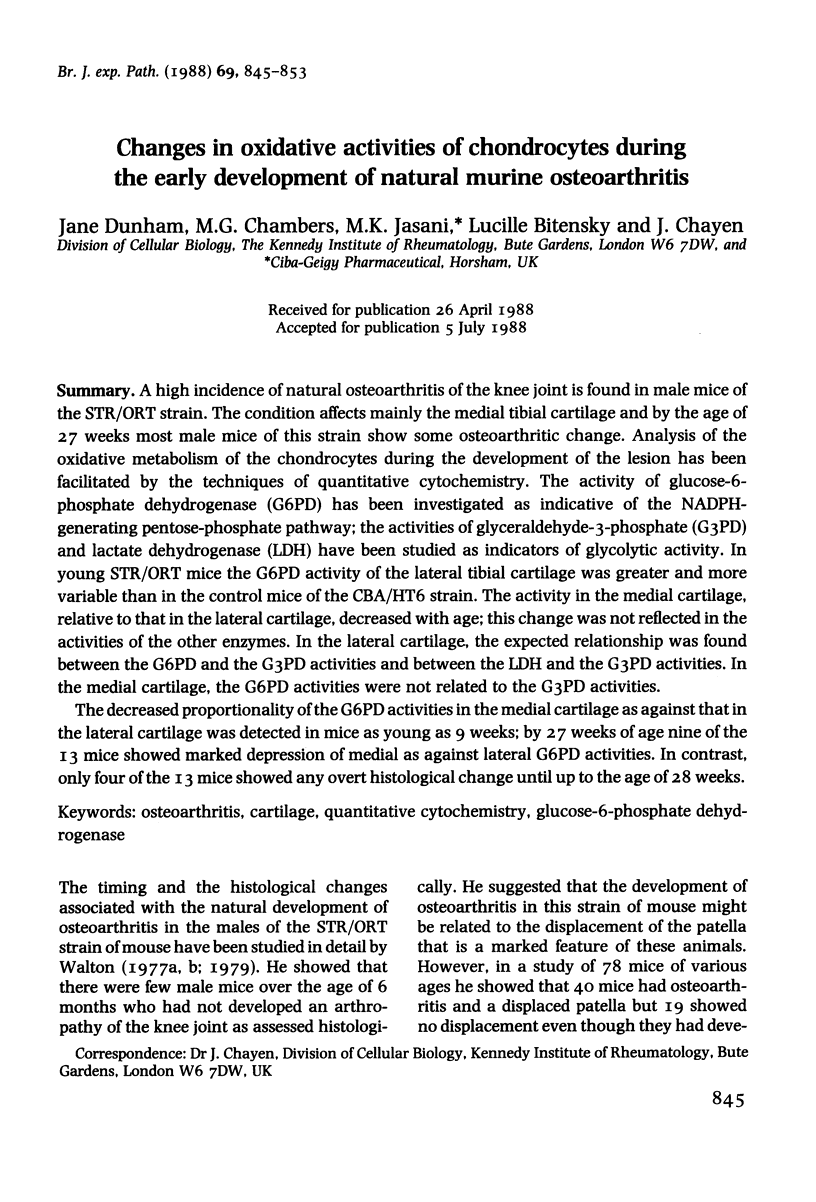
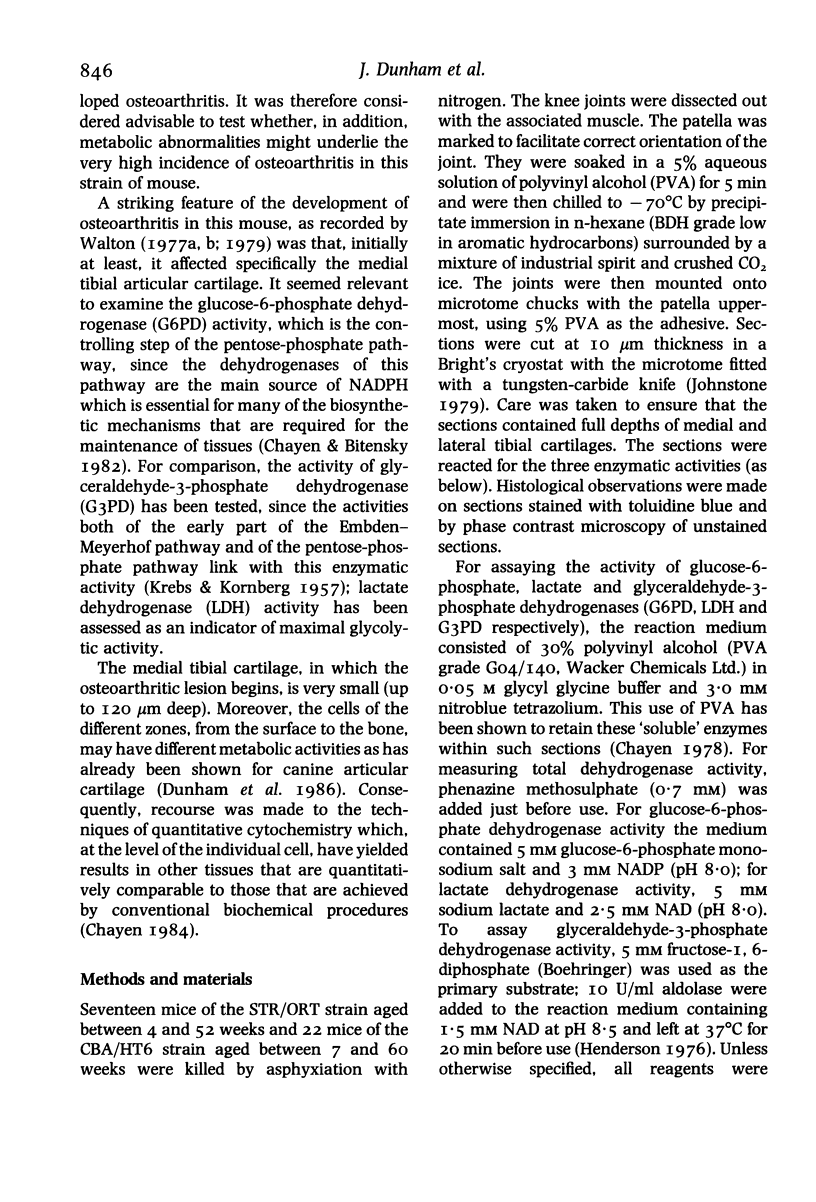
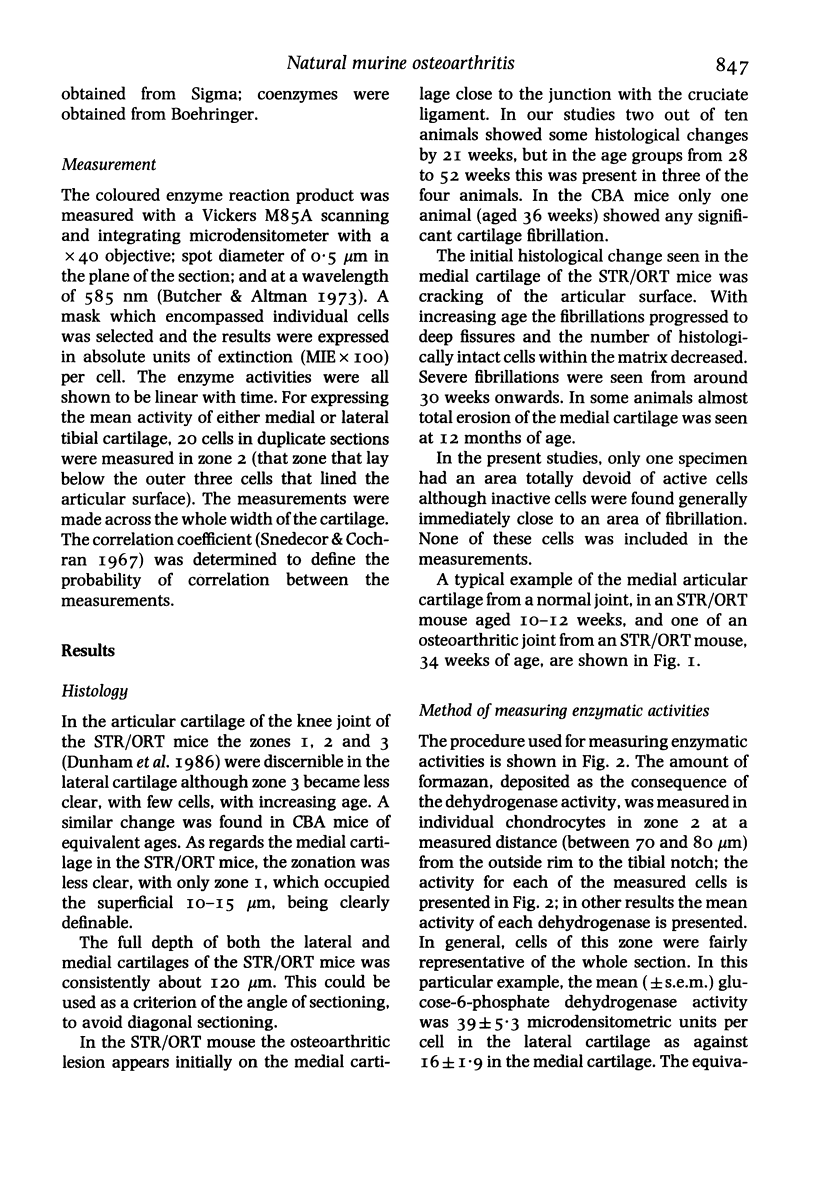
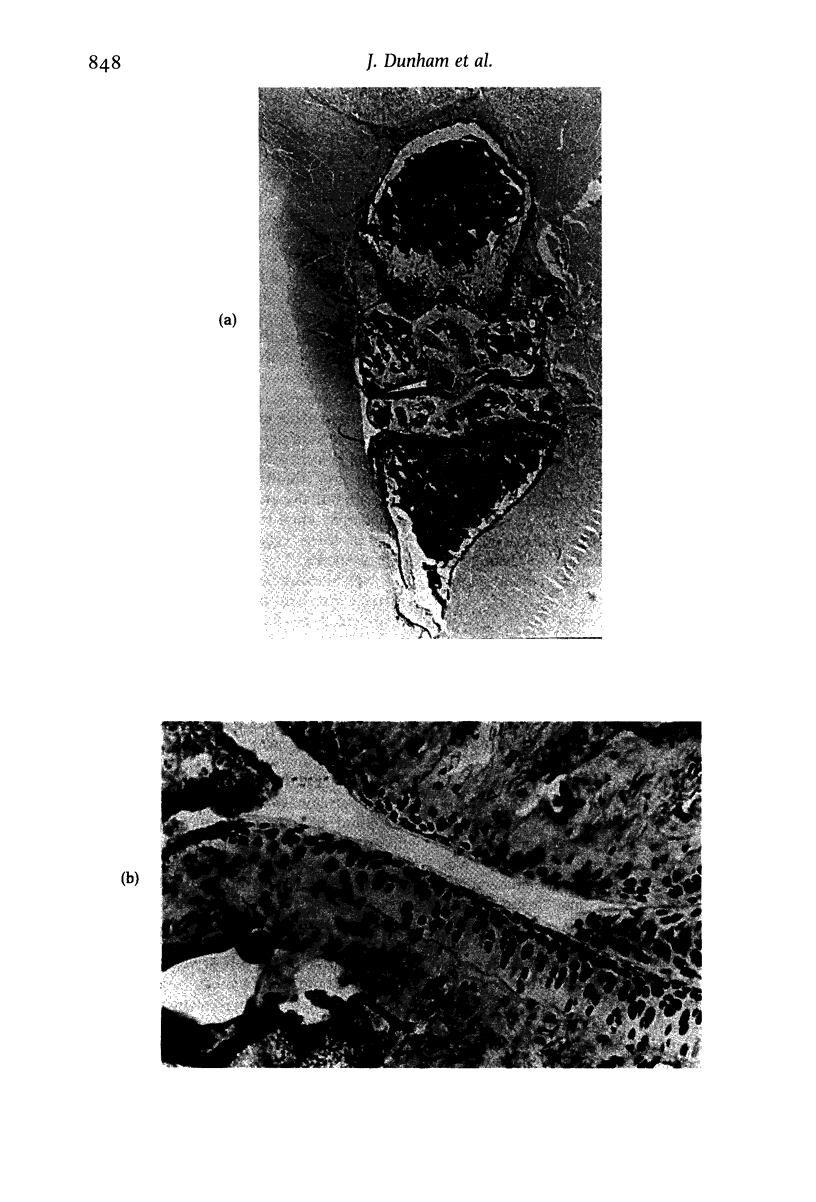
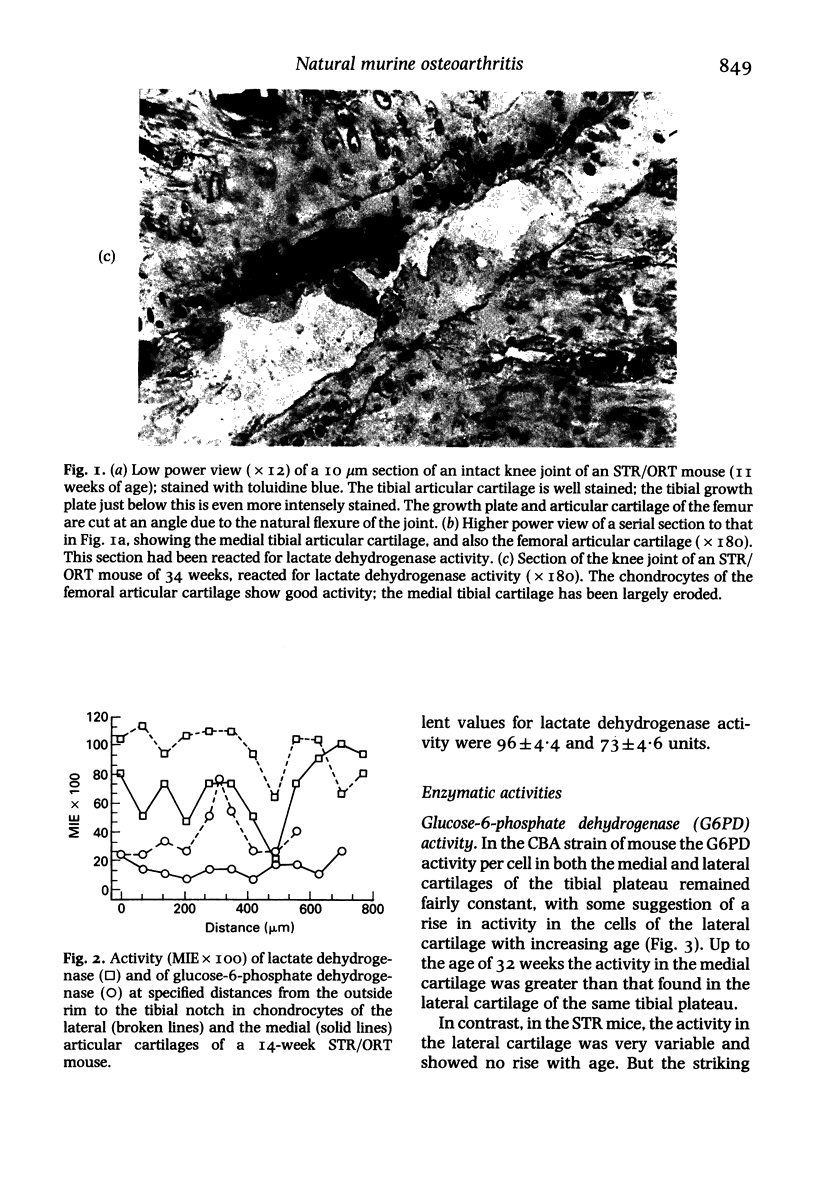
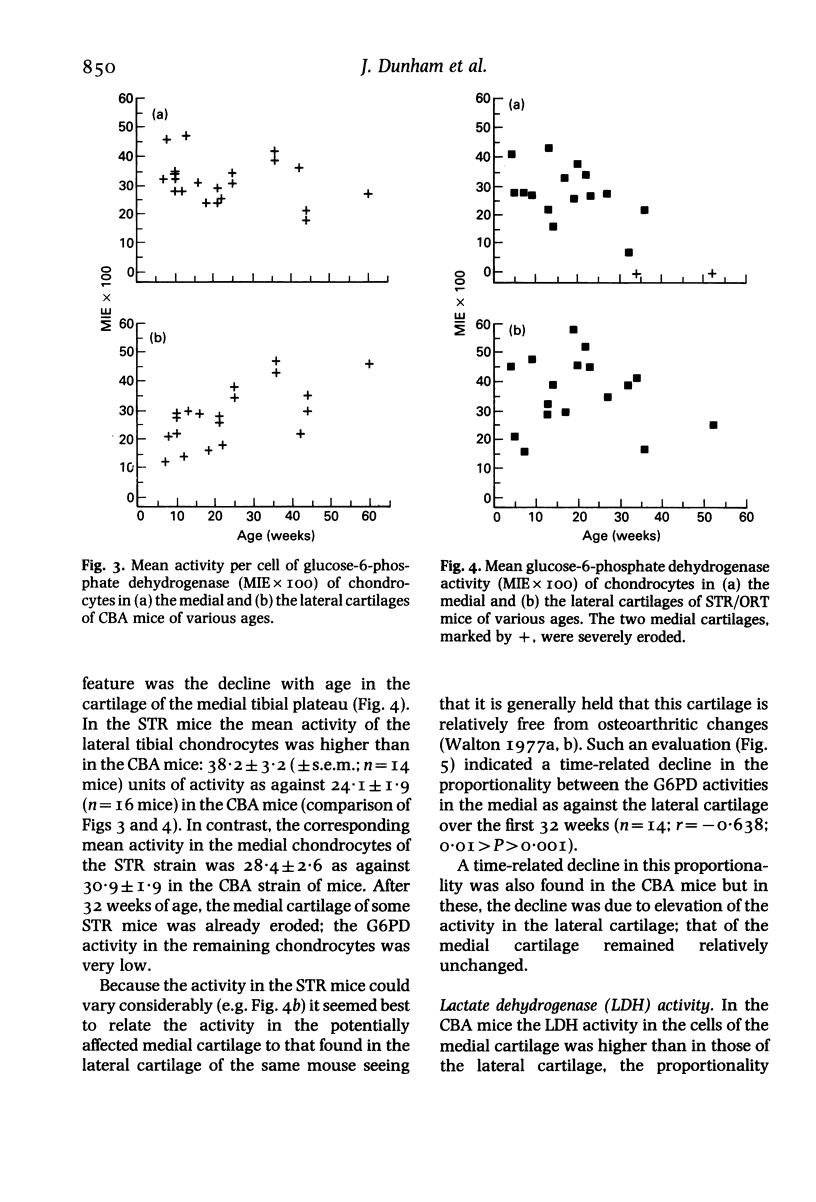
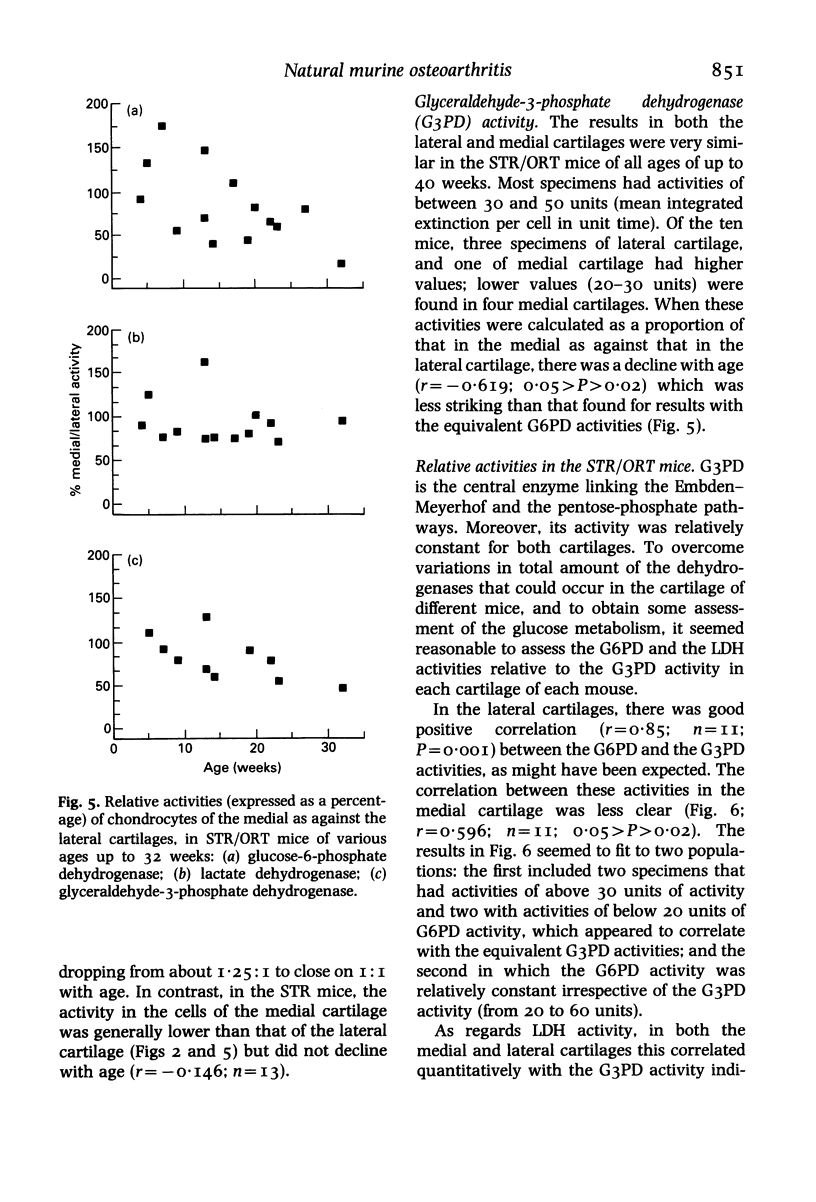
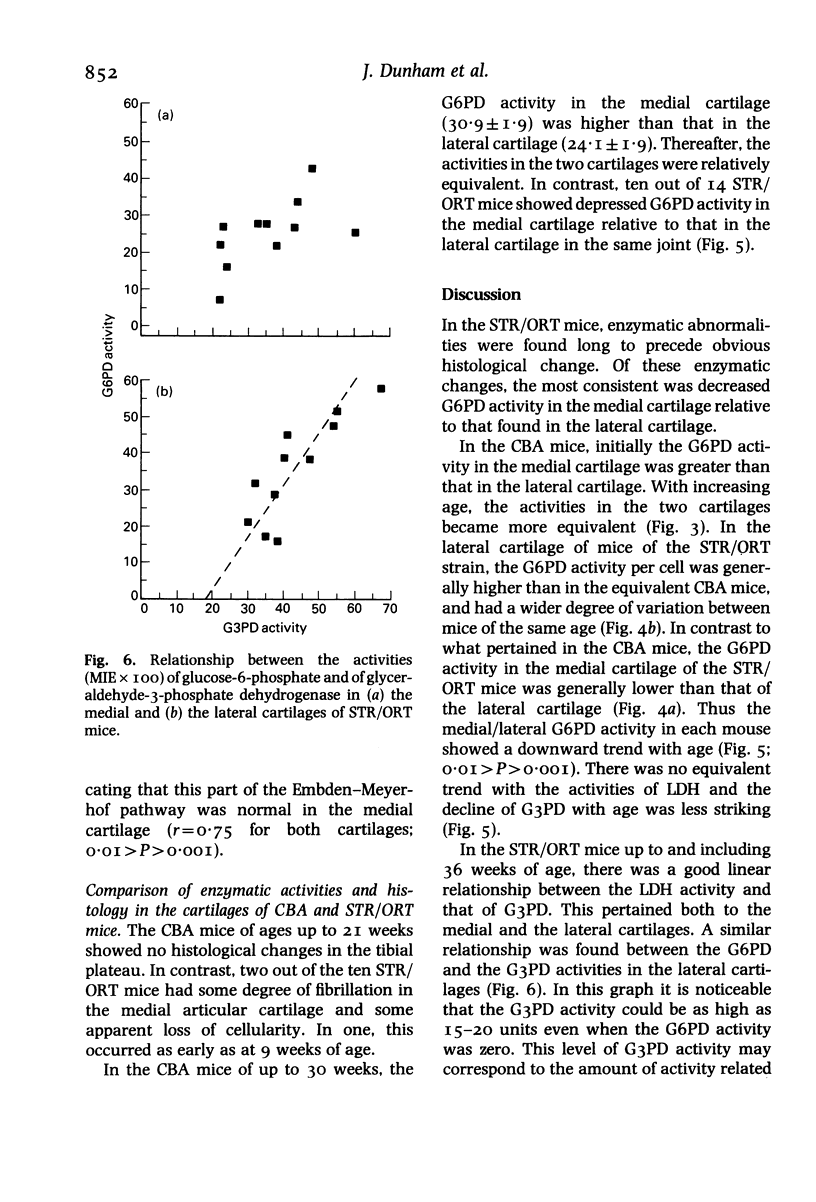
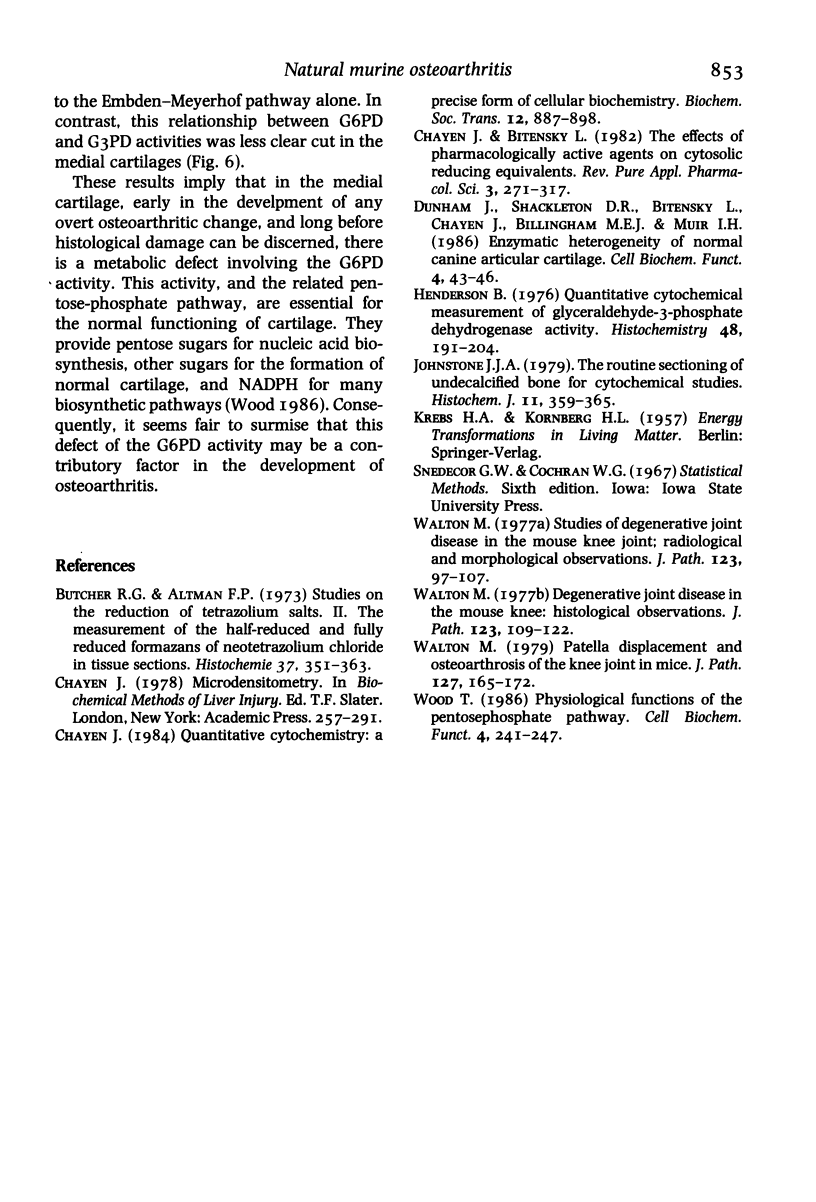
Images in this article
Selected References
These references are in PubMed. This may not be the complete list of references from this article.
- Butcher R. G., Altman F. P. Studies on the reduction of tetrazolium salts. II. The measurement of the half reduced and fully reduced formazans of neotetrazolium chloride in tissue sections. Histochemie. 1973 Dec 31;37(4):351–363. doi: 10.1007/BF00274970. [DOI] [PubMed] [Google Scholar]
- Chayen J. Quantitative cytochemistry: a precise form of cellular biochemistry. Biochem Soc Trans. 1984 Dec;12(6):887–898. doi: 10.1042/bst0120887. [DOI] [PubMed] [Google Scholar]
- Dunham J., Shackleton D. R., Bitensky L., Chayen J., Billingham M. E., Muir I. H. Enzymic heterogeneity of normal canine articular cartilage. Cell Biochem Funct. 1986 Jan;4(1):43–46. doi: 10.1002/cbf.290040107. [DOI] [PubMed] [Google Scholar]
- Henderson B. Quantitative cytochemical measurement of glyceraldehyde 3-phosphate dehydrogenase activity. Histochemistry. 1976 Aug 25;48(3):191–204. doi: 10.1007/BF00497455. [DOI] [PubMed] [Google Scholar]
- Walton M. Degenerative joint disease in the mouse knee; histological observations. J Pathol. 1977 Oct;123(2):109–122. doi: 10.1002/path.1711230207. [DOI] [PubMed] [Google Scholar]
- Wood T. Physiological functions of the pentose phosphate pathway. Cell Biochem Funct. 1986 Oct;4(4):241–247. doi: 10.1002/cbf.290040403. [DOI] [PubMed] [Google Scholar]



